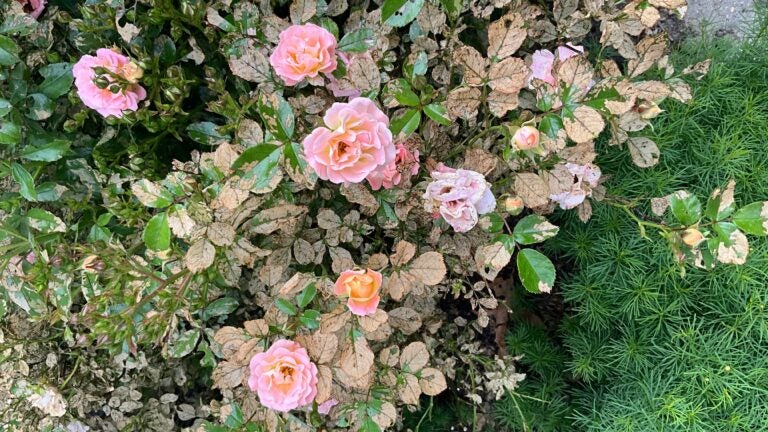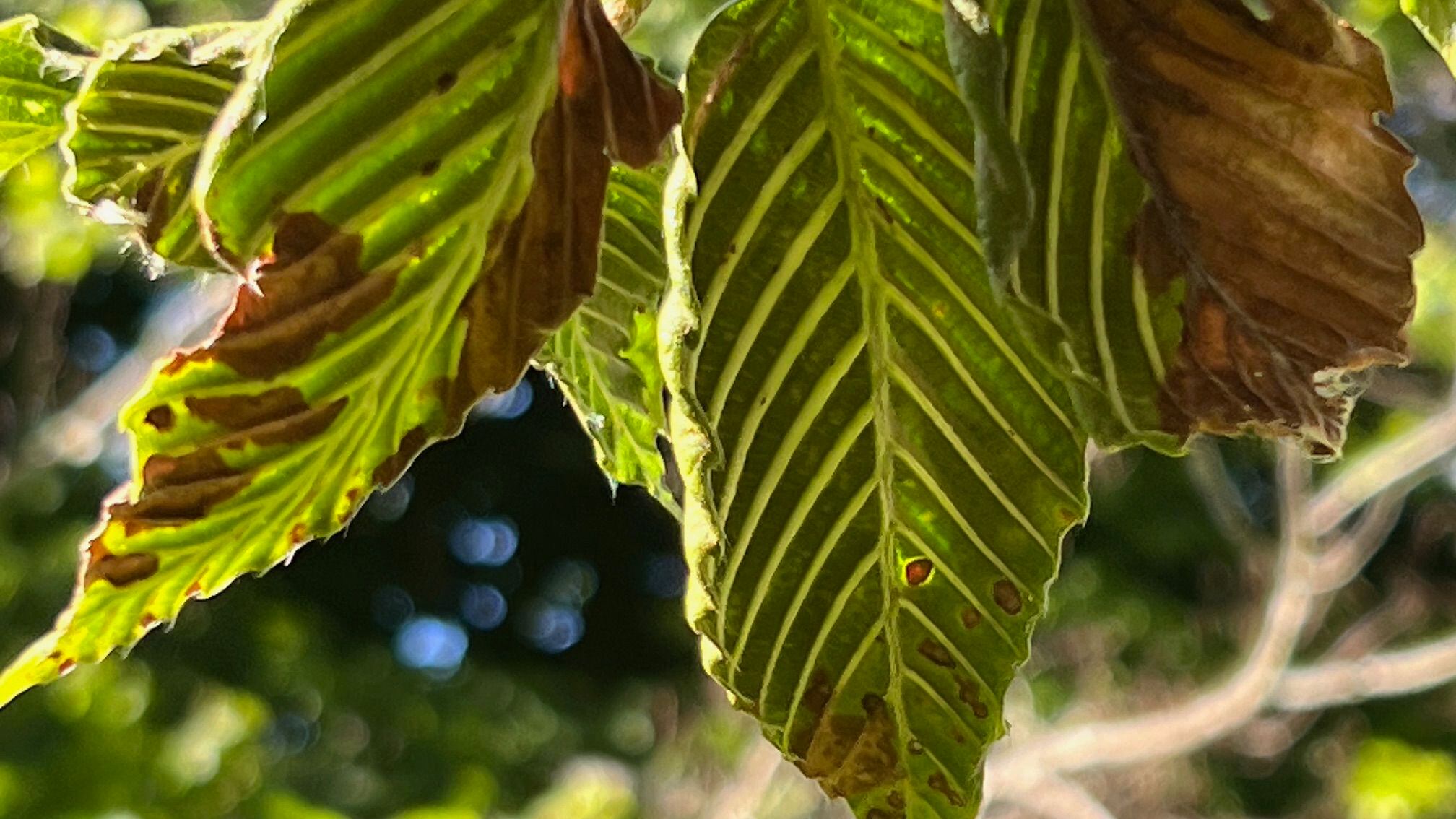 Why are the leaves on this reader's rose bush brown? Handout
Why are the leaves on this reader's rose bush brown? Handout
Thank you for all of the questions (and photos!) you sent in. Please bear with me, as space in this column is limited and I will try to answer as many as I can.
By the end of June, everything is growing strong, including the weeds, and gardening can seem overwhelming. There's still a lot of work to be done before the heat and humidity of summer sets in. Some people think that planting their garden should be finished after Memorial Day, but that's just not true. While it's true that dividing or moving exposed-root plants is best done during the dormant season, you can plant anything that's still available at your local independent garden center. Just be sure to follow the planting and watering guidelines necessary to establish strong roots.
Here are three questions about leaves, each with a very different answer.
Q. Two weeks ago my rose bush was green and looked healthy. Now the leaves are brown. Can you tell me what happened? Will it recover? How can I prevent this from happening in the future? Thank you.
Hmm
A. Your roses appear to be infested with rose slug sawfly larvae, which feed on the undersides of the leaves. As you say, this infestation causes the leaves to quickly ossify and brown, and it's probably too late to stop the damage, but rose slug sawflies only produce one generation per year. New growth will cover the affected leaves, which will fall off, and your rose bush should grow normally for the rest of the summer. To prevent this next year, check the leaves in April and May and remove the larvae by hand or apply an insecticidal soap or insecticide recommended for larval control.
 It is normal for last year's mountain laurel leaves to turn yellow and develop spots after winter. – Handout
It is normal for last year's mountain laurel leaves to turn yellow and develop spots after winter. – Handout
Q. My mountain laurel rarely flowers, and I've noticed these spots on many of the leaves. I have it planted in partial shade near a big white pine. Should I be concerned?
Liz Newton
A. The new shoots in the photos of Kalmia latifolia look healthy and vigorous. It is normal for last year's leaves to turn yellow or develop spots after winter, so there is no need to worry. Damaged leaves will fall off when it gets warmer. Low light levels can reduce flowering. If you prune pine branches to allow the plant more sunlight, there is still plenty of time for next year's flower buds to form.
 Beech leaf disease is caused by tiny insects that inhibit the leaves' photosynthetic ability, eventually causing the leaves to wither and die.
Beech leaf disease is caused by tiny insects that inhibit the leaves' photosynthetic ability, eventually causing the leaves to wither and die.
Q. This American beech tree on my property looked perfectly healthy last fall. But this spring, all of its leaves died, as you can see in the picture. The cause turned out to be an invasive nematode. This is a story worthy of a major article, as these majestic trees are being rapidly damaged and, from what I have read, there is no known effective treatment. Several mature trees on adjacent properties have also been affected. Is there any hope of saving the American beech? Or will it suffer the same fate as the American elm and chestnut?
SK
A. The sudden emergence of this new pathogen is disturbing to all of us who treasure the majesty of our American and European beeches. Both appear to be susceptible to infection. Called “beech leaf disease,” the disease is said to be caused by nematodes (microscopic insects) that inhibit the leaves' ability to photosynthesize, eventually killing the leaves. No method has been found to prevent the disease from spreading, but ongoing research suggests that certain insecticides may increase resistance to the nematodes. An article in last Sunday's Boston Globe Magazine had more information. A manager at Bartlett Tree Service recently told me that they are now using a treatment that has proven effective in managing the disease.
R. Wayne Mejit is a third generation nursery grower, a Massachusetts Certified Horticulturist, president of Weston Nurseries, and owner of Hort-Sense, a horticultural advisory firm. He is Editor-in-Chief of the Massachusetts Horticultural Society Leaflet, a monthly electronic member newsletter, and chairs the Massachusetts Invasive Plant Advisory Group. Send questions to Address@globe.com.
Loading…


